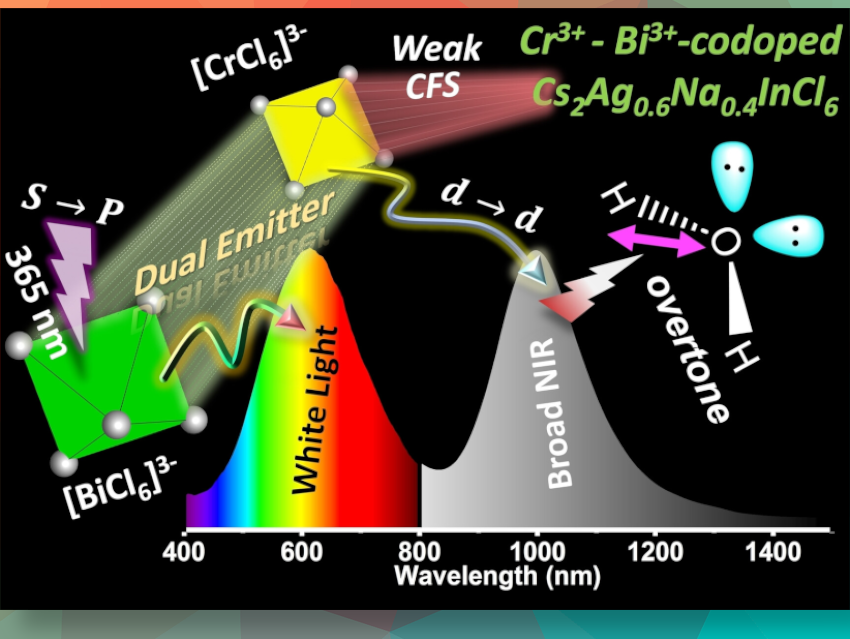Sajid Saikia, Animesh Ghosh, and Angshuman Nag, Indian Institute of Science Education and Research (IISER), Pune, have developed LEDs that emit light simultaneously in two different wavelength ranges, offering a simpler and more comprehensive way to monitor the freshness of fruits and vegetables. Modifying the LEDs with perovskite materials causes them to emit in both the near-infrared range and the visible range, revolutionizing the contact-free monitoring of food.
Dual-Emission pc-LEDs
Perovskite crystals possess the ability to capture and convert light. Due to their simplicity in production and high efficiency, perovskites are already used in solar cells and extensively studied for their potential in other technologies.
In the absence of light converters, LEDs emit light in rather narrow wavelength bands. To cover entire spectrum of white light produced by the sun, diodes in “phosphor-converted” (pc) LEDs are coated with luminescent substances. Nag and his team have used a double emission coating with to develop pc-LEDs that emit both white light and a strong band in the near-infrared range (NIR).
To make the dual-emission pc-LEDs, the reearchers applied a double perovskite doped with bismuth and chromium. By codoping Cr3+ and Bi3+ in Cs2Ag0.6Na0.4InCl6 double perovskite, they combined d -> d and s -> p electronic transitions, resulting in a single material showing broad near infrared (NIR) and white light emission. Part of the bismuth component emits warm white light, while another part transfers energy to the chromium component, leading to its de-excitation and causing an additional emission in the NIR range, as discovered by the researchers.
Water Content in Food
NIR is already used in the food industry to examine the freshness in fruit and vegetables. The researchers explain that “food contains water, which absorbs the broad near-infrared emission at around 1000 nm.” The broad NIR peak overlaps with the water vibrational overtone absorption at ≈1000 nm, enabling non-invasive food inspection using pc-LEDs.
“The more water that is present [due to rotting], the greater the absorption of near-infrared radiation, yielding darker contrast in an image taken under near-infrared radiation. This easy, non-invasive imaging process can estimate the water content in different parts of food, thereby assessing its freshness”, the researchers say.
Proof of Concept
By using these modified pc-LEDs to examine apples or strawberries, the team observed dark spots that were not visible in standard camera images. When the food was illuminated with both white and NIR light, normal coloring that could be seen by the naked eye was revealed, as well as the parts that were beginning to rot, albeit not yet visibly so.
The researchers envision a compact device for simultaneous visual and NIR food inspection, although incorporating two detectors—one for visible light and one for NIR light—could make such an instrument costly for common applications. However, the researchers emphasize that the pc LEDs are easy to produce without any chemical waste or solvents, and the short-term costs could be more than recovered by the long service life and scalability of this dual-emitting pc-LED device.
Reference
- Broad Dual Emission by Codoping Cr3+ (d→d) and Bi3+ (s→p) in Cs2Ag0.6Na0.4InCl6 Double Perovskite,
Sajid Saikia, Animesh Ghosh, Angshuman Nag,
Angew. Chem. Int. Ed. 2023.
https://doi.org/10.1002/anie.202307689



